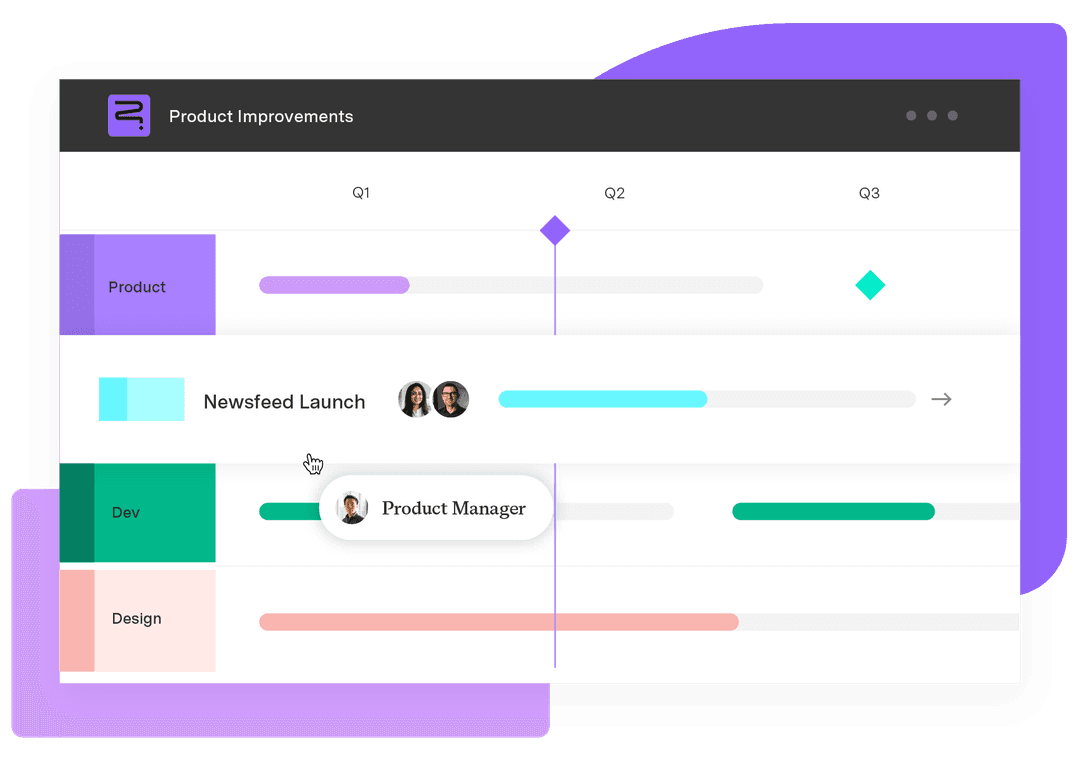7 product owner responsibilities in agile teams
Tempo Team
Managing a product isn’t as simple as following a to-do list. The product owner must balance numerous priorities – defining features, collaborating with teams, and meeting customer needs – all while staying focused on business goals.
In an agile environment, the stakes are high, and flexibility is crucial. It’s a product owner’s responsibility to keep product development grounded. When they understand what the team expects and why it matters, they can lead with clarity and deliver real value in every sprint.
What is a product owner?
A product owner’s role is all about maximizing the product’s value. They’re the go-to person for the product vision, keeping the team focused on work that delivers maximum business value. In a Scrum approach, the product owner works closely with the Scrum team, constantly refining the product backlog, guiding priorities, and aligning tasks with the big picture.
So, what does a product owner do day to day? They set priorities. They say no (a lot). They answer questions from the development team, gather stakeholder feedback, and make sure each sprint brings the product closer to its goals. In short, they keep everything and everyone moving in the right direction.
Among Scrum and agile roles and responsibilities, the product owner is one of the most important. A Scrum product owner’s responsibilities make them instrumental in shaping strategy and acting as the voice of the customer inside the team.
7 key product owner responsibilities
The product owner role sits at the intersection of business goals, user needs, and technical execution. From shaping the product vision to guiding the development team, the PO is both a strategist and a hands-on collaborator.
Here are the essential product owner responsibilities in agile environments:
1. Defining and managing the product backlog
The product backlog is central to a product owner’s role and responsibilities. Think of it as the to-do list for product completion. This roadmap guides the development team and other contributors on what to build and when.
The product owner keeps this backlog in check, ensuring it reflects customer needs and business goals. Here’s how:
Set clear priorities: Prioritize tasks based on what will bring the most value to the customer and business. Whether it’s a new feature or a bug fix, the product owner makes sure the team focuses their efforts on essential work.
Divide initiatives into simple tasks: Big ideas and tasks often get overwhelming, so break them down into smaller, more manageable user stories. This helps the team tackle them step by step during sprints.
Remain flexible: The product backlog is constantly evolving. Adjust priorities to keep the team moving in the right direction as new information comes in, whether from feedback, market changes, or sprint reviews.
Communicate with the team: The Scrum product owner doesn’t work in isolation. They collaborate closely with the Scrum Master and the development team so everyone understands the backlog and delivers on time.
Maintain transparency: Developers and stakeholders need visibility into the backlog. This keeps the team aligned on the product vision and goals.
2. Prioritizing features and user stories
The product owner decides each task’s relative importance and order of execution. With so many features and user stories, the Scrum team needs a clear vision so they can focus on delivering value.
Prioritizing is about maintaining the product vision and making decisions that reflect what’s best for users and the business. The product owner works closely with stakeholders to understand broader goals and adjust based on customer feedback.
Flexibility is essential when circumstances change, whether due to market shifts, new user needs, or updated business goals. However, the PO must make the final call. Prioritizing tasks helps the team focus on what matters most and drive product development forward.
3. Acting as the voice of the customer
When caught up in sprint planning, backlog grooming, and stakeholder meetings, leaders can easily forget the reason behind all the work: the customer. It’s the product owner’s responsibility to keep the user’s needs at the heart of every decision. They act as an advocate to guarantee the product meets real needs – not just business goals or technical specs.
Here’s how POs fulfill this duty:
Representing real user stories, not just assumptions or what they think users want
Collecting feedback through interviews, data analysis, and customer support interactions
Bringing user insights to sprint planning and reviews to better inform the team
Fighting for features that genuinely enhance the user experience
Being the voice of the customer means gathering actionable insights and turning them into meaningful product decisions that will create the most value for users.
4. Collaborating closely with the development team
Building a great product takes close collaboration. A product owner’s responsibilities include working with the development team to turn ideas into tangible features and improvements.
The product owner must be present – not just for sprint planning or standups, but in the day-to-day flow of work. This allows them to clarify user stories and provide timely feedback that keeps initiatives on track.
A Scrum product owner bridges the gap between product vision, technical execution, and customer value. When the team feels supported, they’re far more likely to deliver a product that everyone is proud of.
5. Aligning the product roadmap with business goals
A great product requires purpose. One of the product owner’s most important responsibilities is aligning the product roadmap with broader business goals – not just team preferences or one-off requests.
This requires strategic thinking. Does this feature support growth targets? Will it help retain more users? Will it strengthen the product’s competitive edge?
The product owner works closely with stakeholders, leadership, and the Scrum team to ensure every sprint delivers meaningful progress toward those goals. This focus yields smarter decisions that move the product and the business forward.
6. Stakeholder communication
Effective stakeholder communication is a cornerstone of the product owner role. They keep everyone informed and engaged, forming a bridge between the Scrum team and everyone else with a vested interest in the product.
POs fulfill this responsibility in the following ways:
Setting clear expectations: POs must define how and when they’ll communicate with stakeholders, what information they’ll share, and stakeholders’ involvement in the process.
Managing stakeholder relationships: Not all stakeholders have equal influence or interest. Product owners must prioritize their time and attention to meet the needs of those who matter most to the product’s success.
Facilitating feedback loops: The PO creates opportunities for stakeholders, including project managers, to provide input and ensure their voices are heard and considered during decision-making.
Aligning goals: The product owner makes sure stakeholder expectations align with the product vision and objectives, adjusting priorities and processes as necessary.
7. Supporting sprint planning and reviews
Sprint planning and reviews keep the team and the product on track. During sprint planning, the product owner helps the development team understand priorities and goals for the upcoming sprint. They clarify user stories, answer questions, and promote a shared understanding of the work ahead.
In sprint reviews, POs assess the results of the team’s hard work. They present the completed features, gather feedback, and examine whether the sprint met the product vision. Sprint reviews also allow the product owner to outline the next steps and course-correct, if necessary.
Tempo’s tools support product owners
Product ownership can be overwhelming, but Tempo makes it easier by seamlessly connecting strategy, delivery, and team execution within Jira. It streamlines project governance and website project management by bringing all aspects of product ownership into one place.
Tempo’s Strategic Roadmaps tool helps you construct a clear, visual representation of your product roadmap that keeps the development team on track with business goals. You can easily adjust priorities, monitor progress, and ensure developers are delivering maximum value.
With Idea Manager, you can capture and prioritize feedback from stakeholders and customers so your backlog reflects the most critical features and user stories. This minimizes time spent sorting through disjointed feedback and helps you make informed, impactful decisions.
By simplifying these critical aspects of product ownership, Tempo empowers you to focus on driving product success and maximizing value.
Want to streamline your product ownership? Try Tempo today to see how it can revolutionize your product development process.













































